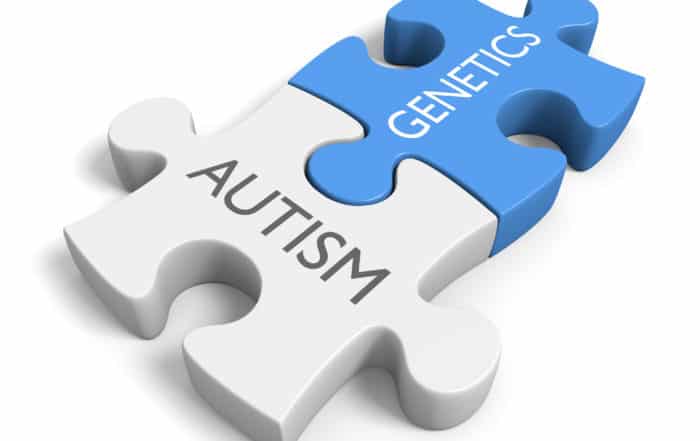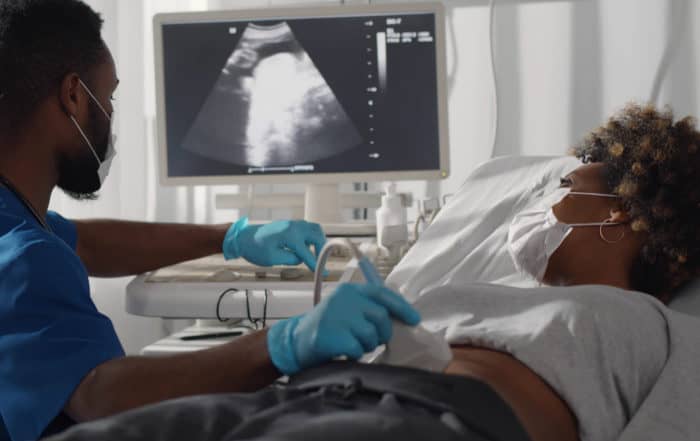Tyler McFayden, Ph.D., considers the intersection of white matter development and language in autism. She discusses language modality and considers how white matter may help predict autism diagnosis and inform interventions. The speaker details an ongoing longitudinal investigation into the relationship between white matter and language development across diagnosis-likelihood groups. Preliminary results suggest a unique relationship between language and white matter in high-likelihood groups that is evident starting between 6 and 12 months postnatal. McFayden discusses study results and considers their implications in autism diagnosis, interventions, and future research.
Handouts are online HERE
In this webinar:
1:00 – Introduction, thanks, disclaimers, and QR codes
2:25 – Language, background, and study approach
5:00 – Language development in siblings of autistic children
8:09 – White matter in autism and language
13:30 – Study: White matter and language development across time
15:00 – Methods and analysis
19:35 – Significant relationships
23:15 – Differences in expressive and receptive languages
25:40 – Summary and discussion
30:45 – Future directions
34:12 – Q &A
Language modality and development
Studying language development in individuals who do not communicate verbally can help us understand how language modality (the way language is conveyed) relates to the brain and vice versa (4:15). Language delays are one of the earliest emerging endophenotypes (biomarker subsets) of autism. McFayden explains that standard models of language development employ the “wait and see” method, which is strictly behavior-based. Sometimes, practitioners wait too long and miss opportunities for the most effective early interventions (5:36). By investigating non-verbal language modality across time, the speaker continues, we can discover where language phenotypes begin to diverge from the neurotypical population and, therefore, find the most effective timing for early interventions (6:00).
Siblings of autistic children (Sib-ASD) are 3 to 4 times more likely to experience language delays than siblings of non-autistic children. Similarly, 20 – 30% of Sib-ASD receive an autism diagnosis (7:00). Therefore, younger siblings of children with autism are considered a high likelihood (HL) group. In McFayden’s ongoing study, her team observes white matter development across time for groups at high likelihood (HL) and low likelihood (LL) for autism diagnosis (2:25). The speaker emphasizes that white matter measurements allow a mechanistic approach to language development, which may be visible earlier than behavioral presentations (7:25).
White matter
McFayden describes white matter as the portion of the brain that is myelinated or enclosed in myelin. This fatty lipid-protein gives white matter its color (8:09). These myeline sheaths act as electrical insulators that support signal transduction in the brain and, as such, the formation of functional circuits. Therefore, white matter is critical to understanding how information is communicated throughout the brain (8:25). White matter is measured using an MRI to record fractional anisotropy (FA), an index of the rapid maturation of fiber pathways in the brain. Higher FA relates to increased age, myelination, and fiber maturation (9:15).
White matter in autism
One of the earliest differences documented in autism is atypical organization of white matter, in some cases evident by six months post-natal (10:30). Behavioral implications of white matter organization discussed in the literature include social cognition, behavioral control, repetitive behaviors, and sensory interests. However, no work to date has mapped white matter development to language despite these occurring at similar times (11:40).
White matter in language
White matter has been linked to expressive and receptive language in the neurotypical population, specifically in the arcuate fasciculus and corpus callosum. Generally, higher axon insulation (myelination) corresponds to higher language scores (12:10). McFayden reiterates the importance of evaluating the relationship between white matter and language to understand the pathophysiology and inform effective and timely language interventions for autism (13:00).
Study: White matter and language development over time
The speaker outlines her teams’ ongoing study to evaluate longitudinal relationships between white matter microstructure in infants at HL (high likelihood) and LL (low likelihood) for autism at 6, 12, and 24 months. Specifically, they aim to answer two questions (13:30):
- Which white matter structures are related to expressive and receptive language in the first two years postnatal?
- Do relationships between white matter and language over time differ as a function of the likelihood group? If so, when?
Data and analysis
Study data are gathered from the Infant Brain Imaging Study (IBIS), an ongoing (15 years and counting) investigation that follows younger siblings of autistic and neurotypical children at 6, 12, and 24 months (14:00). The speaker and her team separated 461 participants into three groups (15:00):
- HL-ASD: received a diagnosis at 24 months
- HL-Neg: did not receive a diagnosis
- LL-Neg: siblings of neurotypical children
Researchers used the Mullen Scales of Early Learning to derive values for expressive and receptive language (EL/RL). They recorded FA values from nine common brain connection pathways to measure white matter volume (16:15). The speaker outlines analytical methods, highlighting linear mixed-effect modeling, piecewise linear estimates, and autoregressive correlation structure (17:10). White matter and language were considered main effects and used to assess how changes in white matter and language impact certain groups compared to others (18:25).
Results
Analysis revealed a unique significant relationship between language and the arcuate fasciculus (19:35). McFayden presents a data plot where participant FA values are plotted against expressive language measures at each time scale. Preliminary findings show a positive relationship between FA and expressive language in the HL-ASD group. This relationship diverges from the HL-Neg group at twelve months and the LL-Neg group at six months (20:53). The relationship between white matter and expressive language is steeply positive in the HL-ASD group compared to HL-Neg and LL-Neg groups (22:47). In a model of predictive language scores based on collected data, the HL-ASD group also breaks away in the third FA percentile (23:15).
Researchers did not find any significant interactions between FA values and receptive language for any group (24:06). However, group trends for receptive language exhibit the same patterns observed in the expressive language plots. The speaker asserts that, although the relationship did not reach statistical significance, the similarities in receptive and expressive language trends compared to white matter warrant further attention (25:00).
Summary and discussion
McFayden reiterates the significant relationship between white matter and language in autism and notes the differences between expressive and receptive language (25:40). A robust positive relationship between language and white matter volume emerges in autism between six and twelve months postnatal and remains through the two-year mark. She explains that HL-ASD infants with the smallest gains in FA values exhibit the least gains in language over time and overall lowest language scores by 24 months. These findings underscore the importance of appropriately timed interventions (26:40). Because findings were specific to the right arcuate (expressive language), we can conclude that expressive and receptive language (left arcuate) do not have the same tractography (27:40). The speaker mentions evidence suggesting that left acuate lateralization does not happen to the same extent in autism, which could reflect right-dominant language processing (29:12).
Future directions and key takeaways
Future investigations should use a smaller time window (e.g., 18 months) and larger HL-ASD samples to more fully understand the temporal aspect of this relationship. The speaker also suggests consistently observing brain-behavior relationships through school age (30:45). Finally, HL-ASD groups could be further parsed out according to language trajectory to reveal more subtle differences in the language-white matter endophenotype (31:28).
McFayden reemphasizes that the development of white matter in infants who later receive an autism diagnosis is linked to lower expressive and receptive language in the first two years of life. These specific language relationships emerge as early as twelve months, which is well before diagnoses are generally made (32:20). The speaker asserts that these findings support the idea that the “wait and see” method is not a good approach. She notes that this is a new field of study and suggests incorporating these data into future observation and diagnosis methods to ensure proper intervention timing (33:00).
McFayden provides thanks and acknowledgments before the Q&A, where she discusses preterm babies (40:30), ongoing studies and where to sign up (42:00), potential subgroups and language trajectories (47:00), and much more.
The speaker:

Tyler McFayden, PhD, is a NICHD T32 Postdoctoral Fellow at the University of North Carolina-Chapel Hill. Prior to her T32 position, she received her bachelor’s in science from Davidson College and PhD in Developmental and Clinical Psychology from Virginia Tech. She completed her APA-accredited internship at UNC’s Carolina Institute for Developmental Disabilities. Dr. McFayden currently works with Dr. Clare Harrop (Health Sciences) and Dr. Mike O’Shea (Pediatrics), researching social communication profiles of autistic youth and sex differences in neurodevelopmental trajectories. Dr. McFayden also works closely with Dr. Jessica Girault, PhD, a member of the IBIS group at UNC, studying neuro-behavior relations in high-likelihood infant samples. The April presentation will feature results and discussions from their recent paper highlighting a novel white matter-language connection in the right arcuate fasciculus in infants who later are diagnosed with autism at 24 months.
Take the knowledge quiz
Can’t see the quiz below? Take it online HERE
The Low-Hanging Fruit: Exploring Monogenic Syndromes with Elevated Rates of Autism
Dr. Daniel Vogt, Ph.D., explores monogenic syndromes and what they can tell us about the underlying causes of autism. He describes signaling pathways critical in early development, highlighting the electrical nature of
Behavioral and Brain Signatures of Autism in Females
Kaustubh Supekar, Ph.D., examines recent findings about gender/sex differences in autism phenotypes and brain organization. He highlights the underrepresentation of females in autism and underscores the need for a large-scale science approach. The
Editorial – Setting Priorities for Autism Research
Autism organizations, individuals with autism spectrum disorders (ASD), and parents have differing views on how best to proceed with autism research. However, nearly all of us can agree that the progress that
Research on Maternal Immune Activation, Pregnancy & Covid-19
Learn about emerging findings on maternal immune activation and Covid-19. About the speaker: Judy Van de Water, PhD, joined the faculty in the
Possible Fat-Related Biomarker Detected in Very Young Children with Autism
Researchers in Japan report that they have identified a possible biomarker for autism spectrum disorders (ASD) in very young children. Noting that both low birth weight and obesity in infancy are known
Editorial – Debating the Role of Genetics in Autism
The history of autism is replete with arguments about its underlying causes and treatments—and frequently over the past 50 years, these arguments have involved genetics. While it is generally accepted that genes






